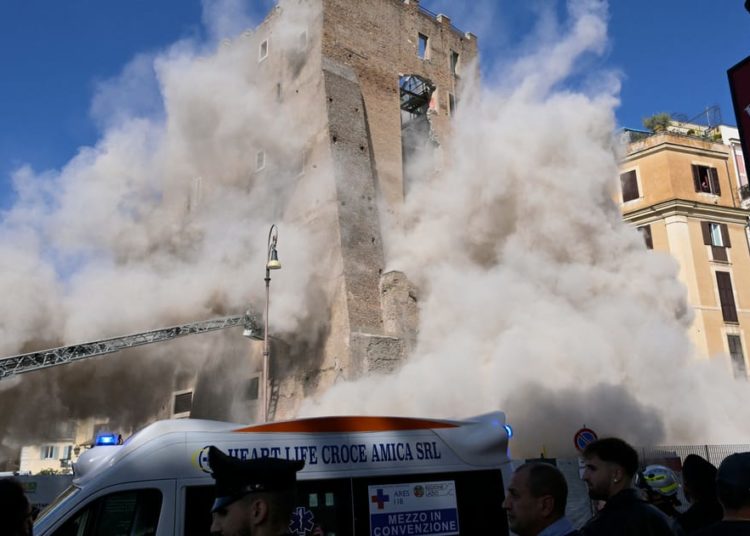At least one person was killed and tens of thousands were forced to flee as Typhoon Kalmaegi hit the central Philippines on Tuesday, bringing destructive winds and dumping torrential rain that submerged vehicles and stranded people on the upper levels of their houses in a region still reeling from a massive earthquake.
Videos posted on social media and verified by The New York Times showed streets on the island of Cebu overwhelmed by floodwaters and people trying to get to dry ground. One clip captured a man in a red safety vest heading down a street on paddle board to check on others.
“We were marooned inside our house and rushed to the second floor,” Monique Haeyn Rosario, 28, who lives with her toddler, her parents and other family near the Butuanon River in Cebu City, said in a telephone interview. She said the river’s level started rising quickly around 5 a.m. Tuesday. Floodwaters outside her house were as high as 10 feet, she estimated.
“The authorities have reached us and are rushing aid, but I am appealing for food, and most importantly water and dry clothes and medicines” she said.
The national government said it had distributed 6 million Philippine pesos, about $100,000, of aid, including food. The military and Coast Guard were helping to clear debris and evacuate residents from flooded areas.
One fatality was a government worker who was helping clear trees before the typhoon hit, the authorities told local news media. The tree the woman was working on fell on her.
The extent of the damage was not immediately clear but nearly 60,000 people were in the path of the storm, which is known as Tino in the Philippines, according to the National Disaster Risk Reduction and Management Council. Around 26,000 families were preemptively evacuated across the islands of Leyte, Cebu and Negros as authorities warned of “life-threatening conditions.”
Kalmaegi hit the Philippines about a month after a magnitude 6.9 earthquake killed dozens in northern Cebu. On Tuesday morning, the storm had maximum sustained winds of about 95 miles per hour and gusts of up to 125 m.p.h, according to the Philippine Atmospheric, Geophysical and Astronomical Services Administration.
The storm was moving west toward Panay and Palawan islands, and is then forecast to move beyond the Philippines and toward Vietnam.
Strong wind warnings were raised across northern Cebu, including for the towns of Bogo, San Remigio, Borbon, and Tabuelan — the same communities that were at the center of the Sept. 30 earthquake.
Officials in San Remigio had sounded the alarm days before the storm’s arrival. In a public advisory issued over the weekend, the municipal government said, “Due to the recent earthquake, our existing evacuation centers remain unsafe to be occupied.”
Even as Kalmaegi weakened over land, the authorities said another weather system was forming east of the southern island of Mindanao.
Jiawei Wang is a video journalist for The New York Times based in Seoul.
The post Thousands Flee Flooding as Typhoon Kalmaegi Slams Central Philippines appeared first on New York Times.




